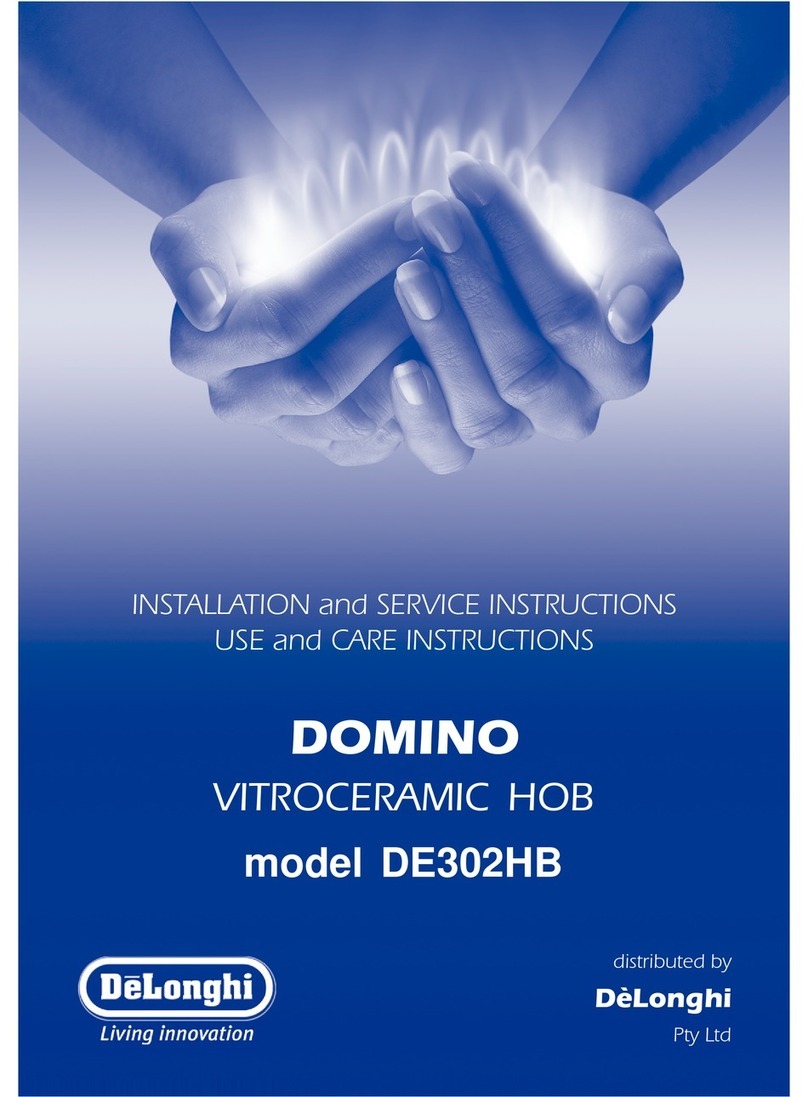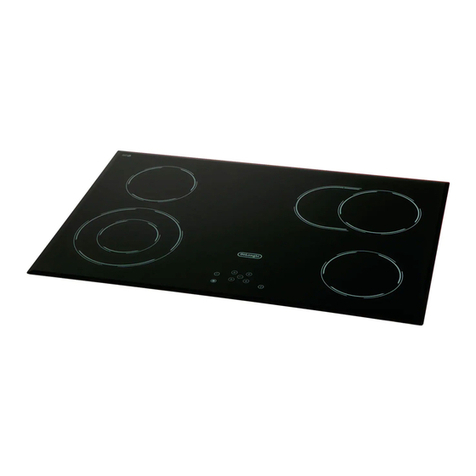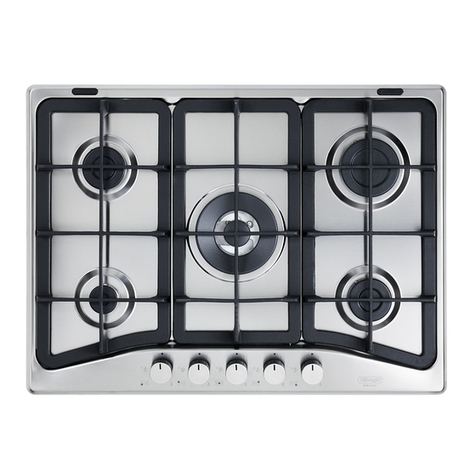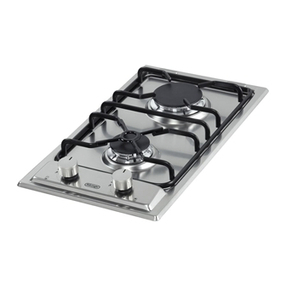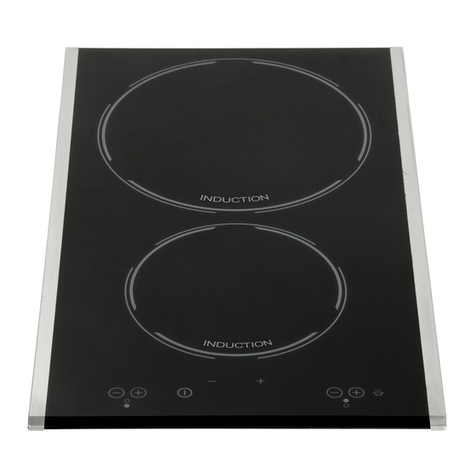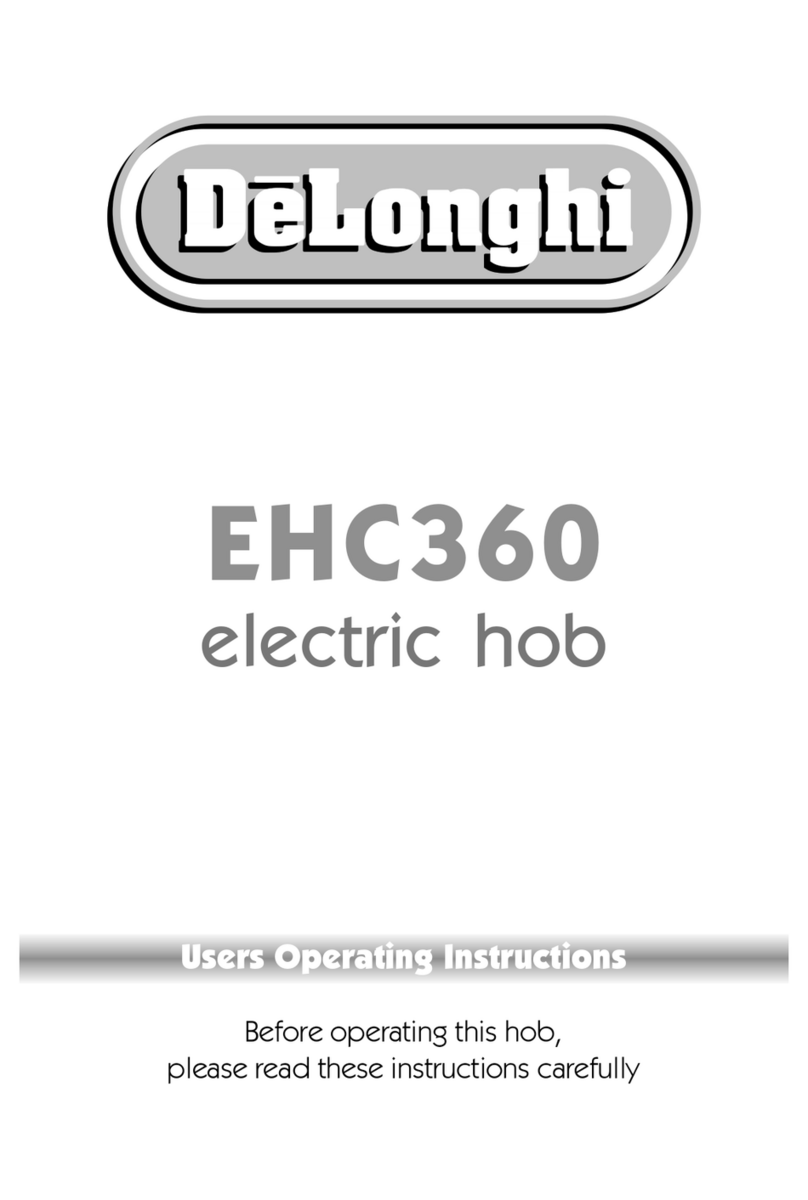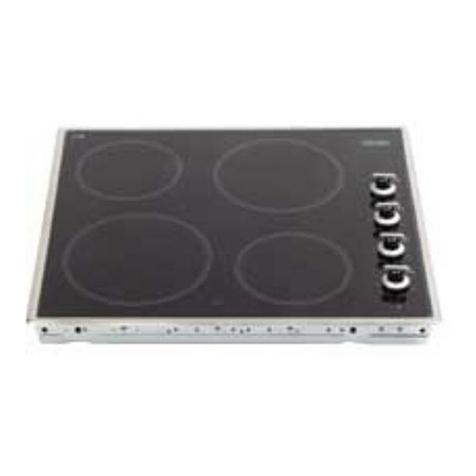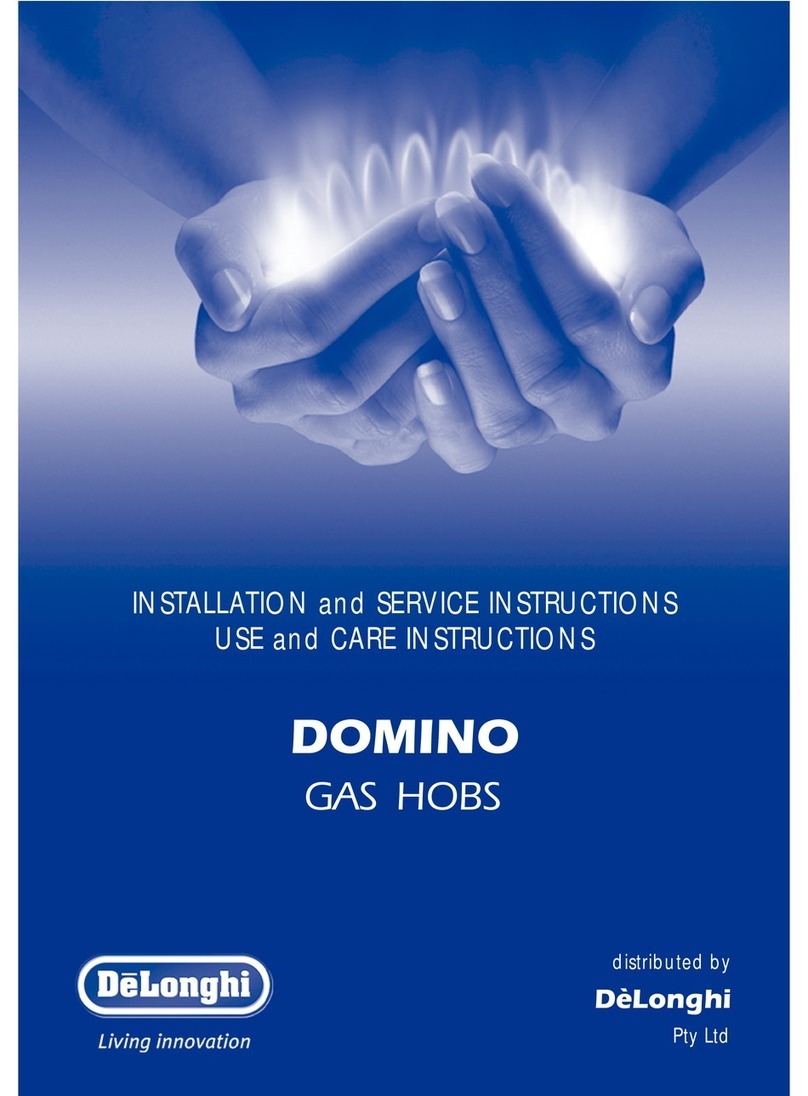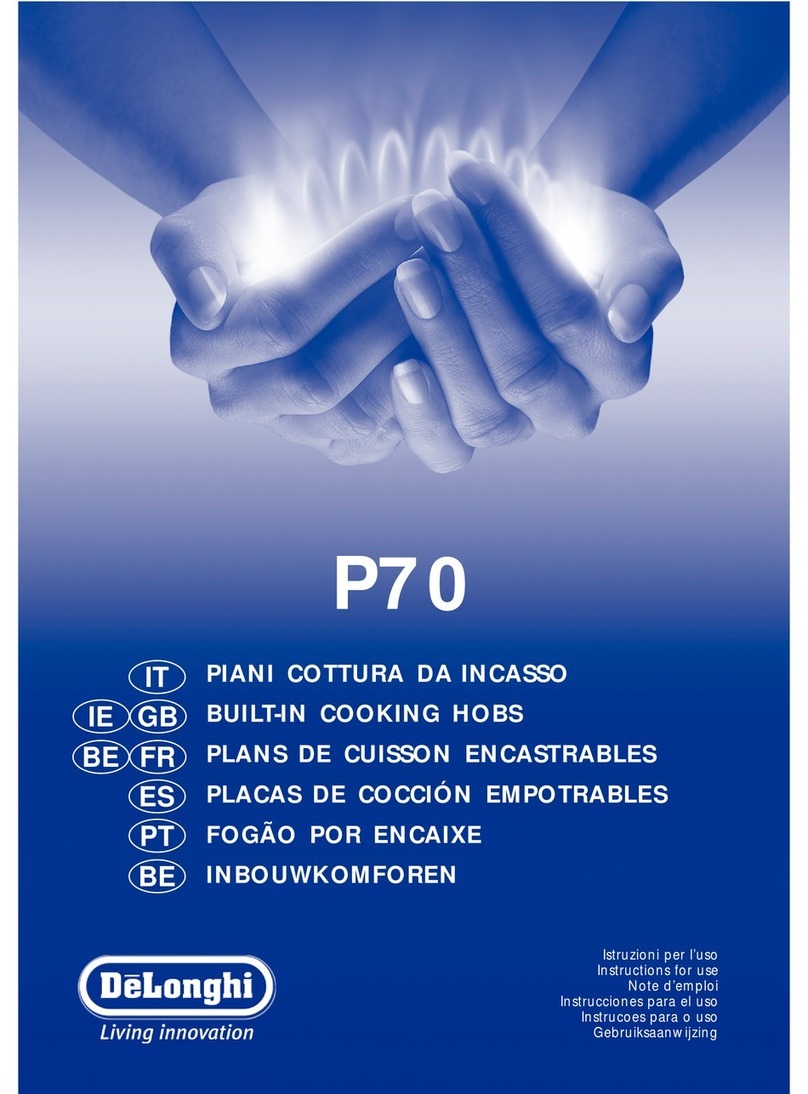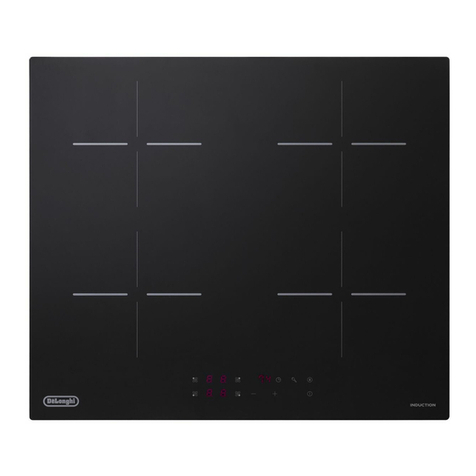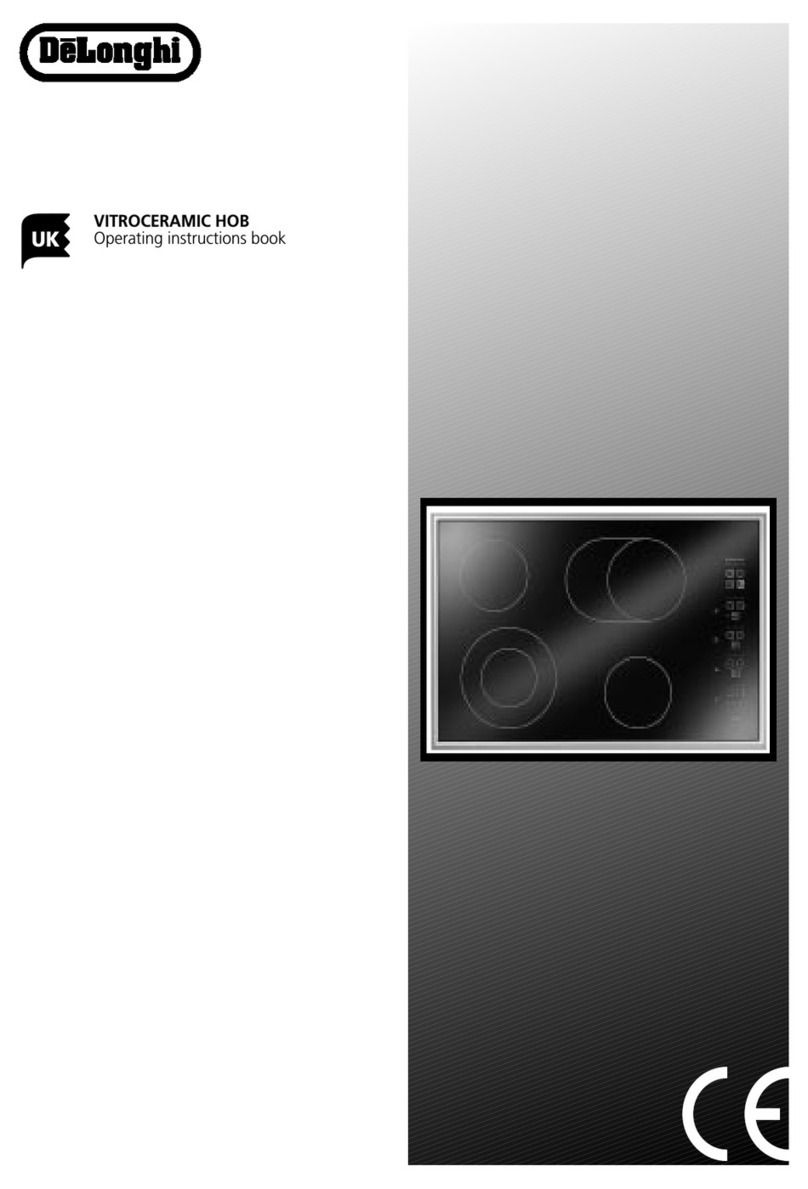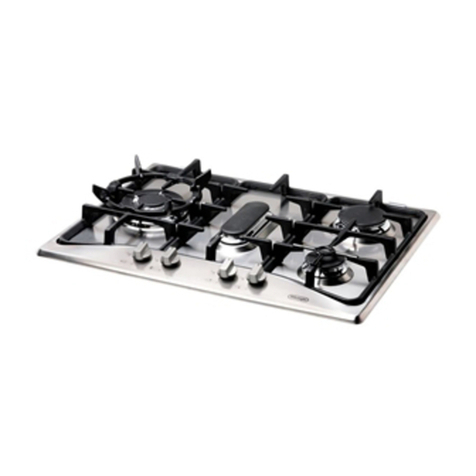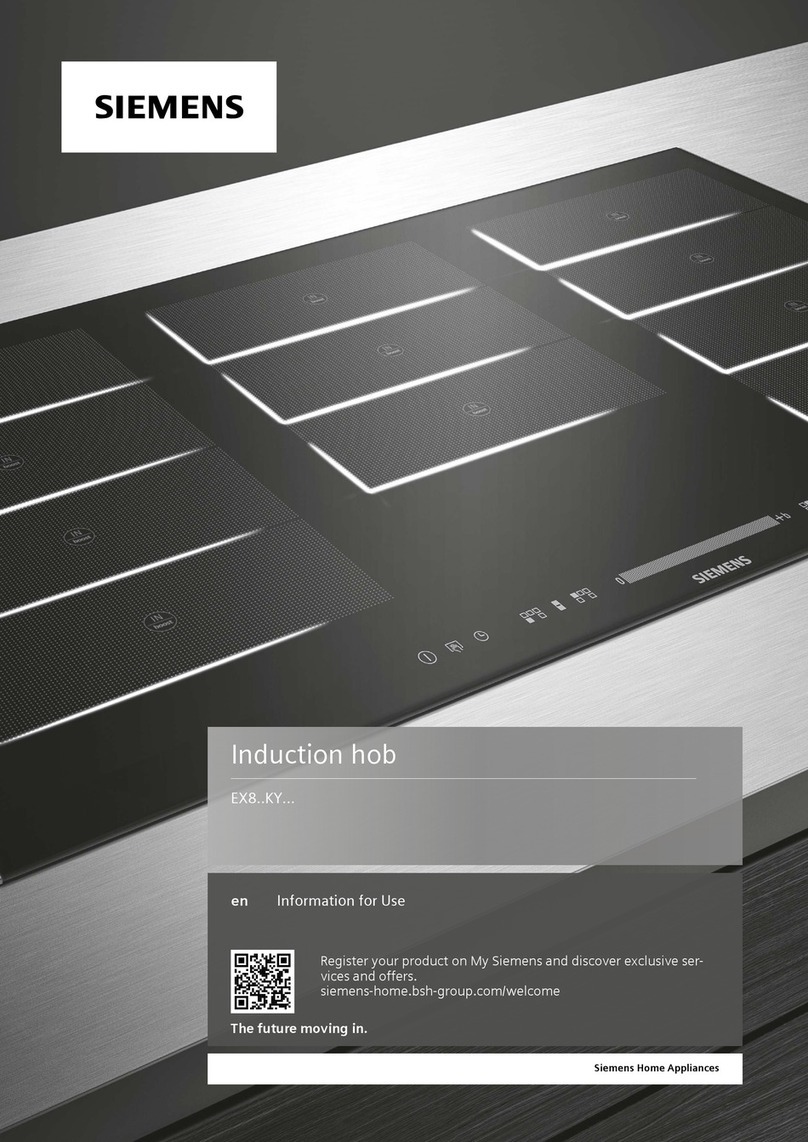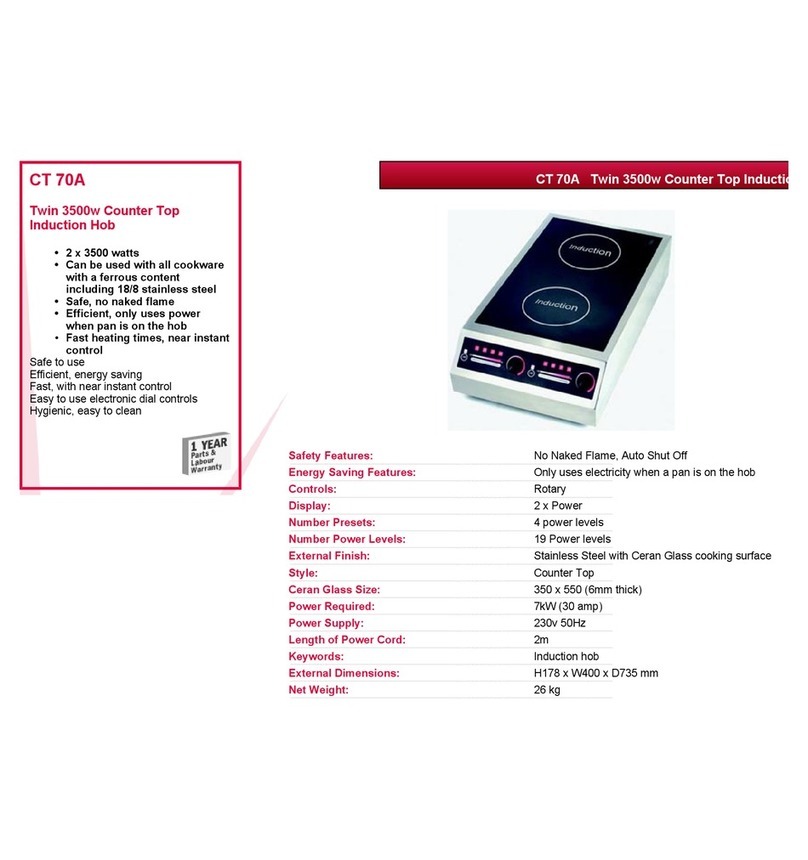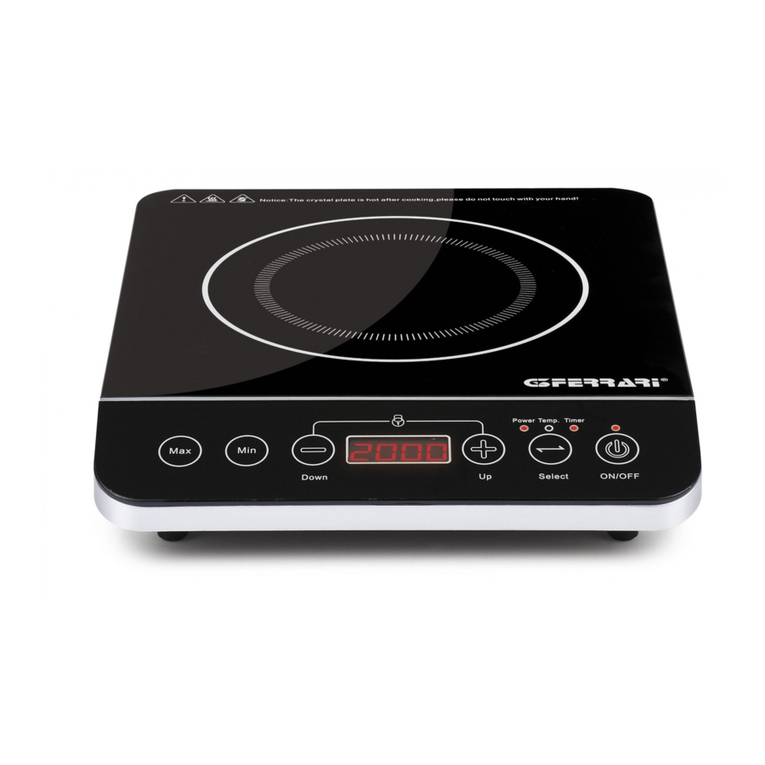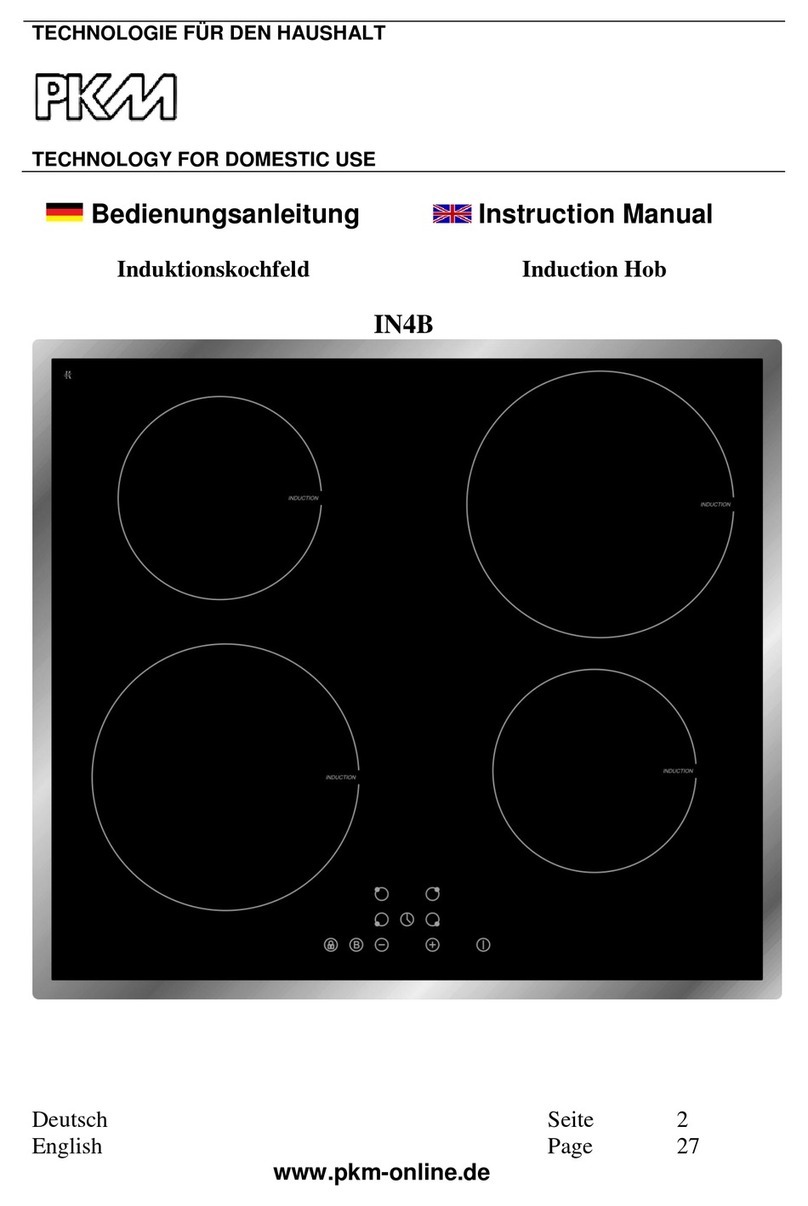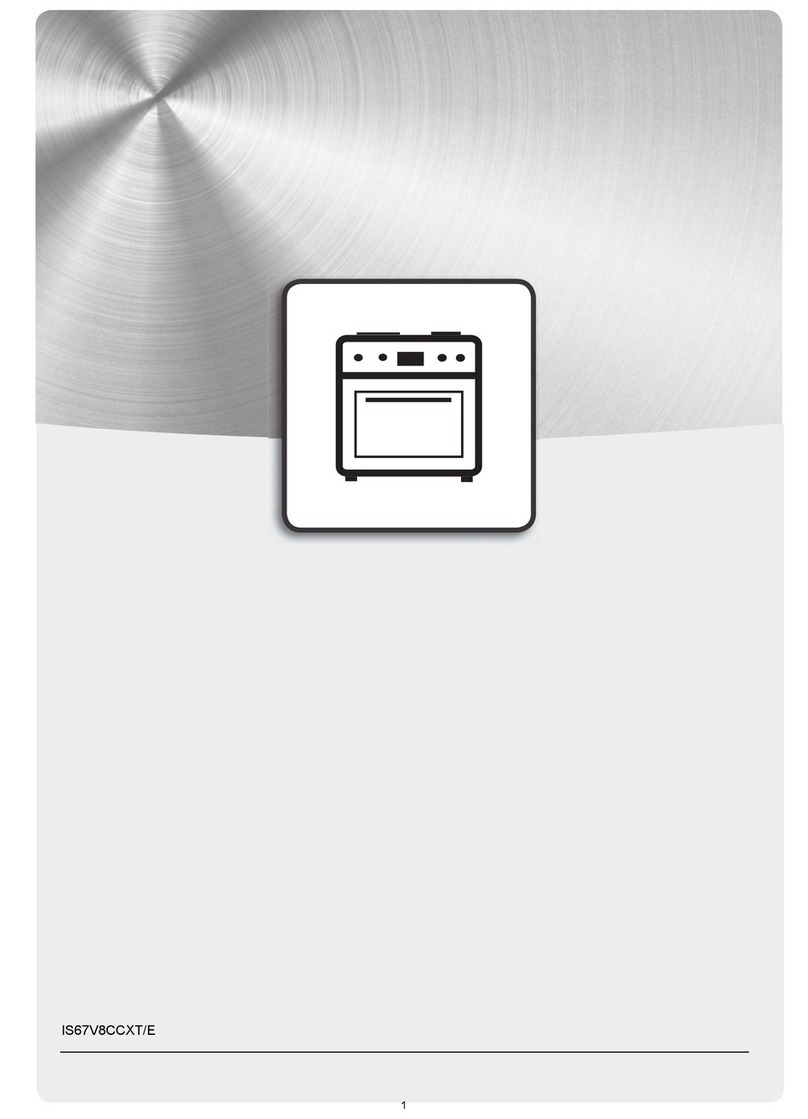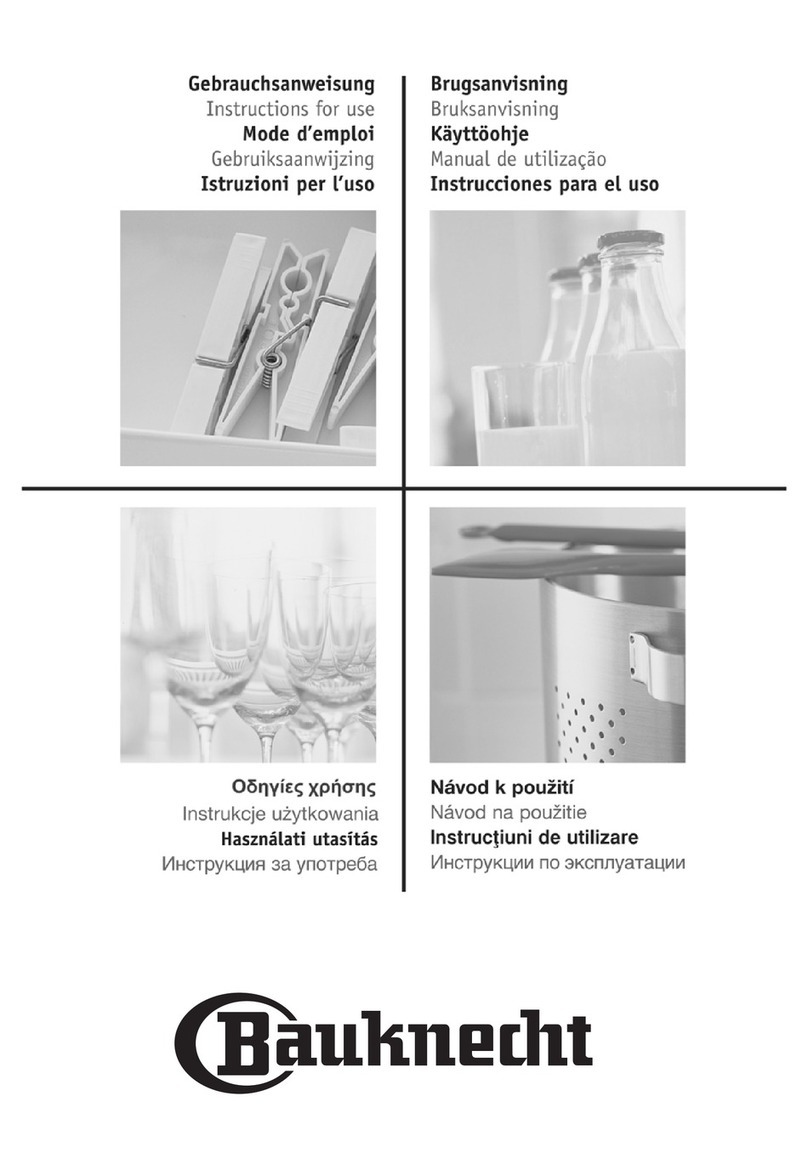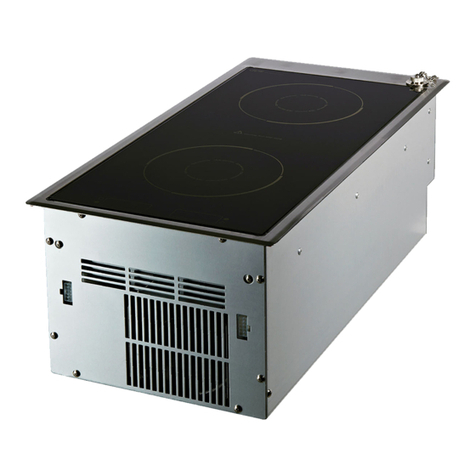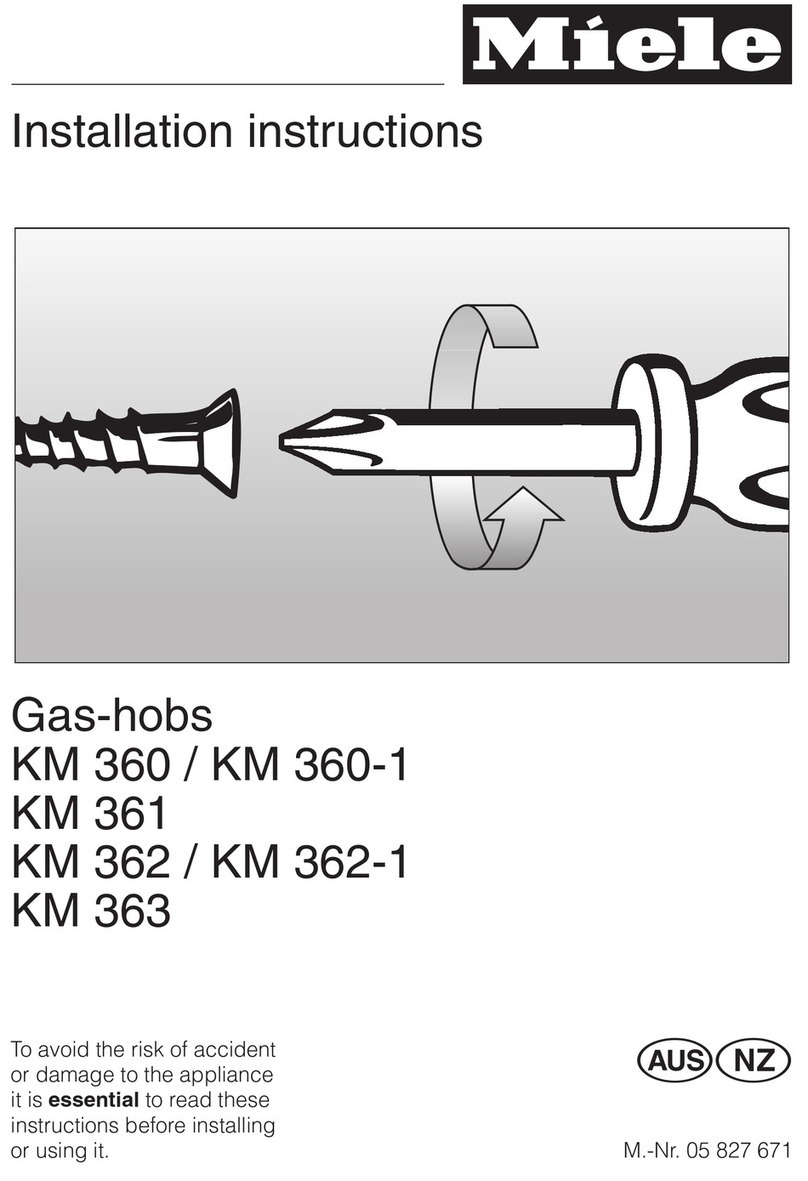- 18 -
ENGLISH
GENERAL
Carefully read the contents of this leaflet since it pro-
vides important instructions regarding safety of installa-
tion, use and maintenance.
Keep the leaflet for possible future consultation. All the
operations relating to installation (electrical connections)
must be carried out by specialised personnel in conform-
ity with the regulations in force.
1.1THE PRINCIPLE OF INDUCTION
The system of cooking by induction is based on the
physical phenomenon of magnetic induction.
The fundamental feature of this system is direct transfer
of heat energy from the generator to the pan without
intermediate means (different from traditional cooker tops
see fig.1).
1.2 ADVANTAGES
If you compare your electric cooker tops, with the
induction cooker top, the result will be:
- Safer: low temperature on the glass surface
- Quicker: brief heating times.
- More precise: the top reacts immediately to your
commands
- More efficient: 90% of the energy absorbed is tran-
sformed into heat.
1.3 COOKINGVESSELS fig.6
Cooking by induction uses magnetism to generate heat.
The vessels must therefore contain iron.
Check if the vessel material is magnetic using a magnet.
Important:
To prevent permanent damage to the cooker surface, do
not use:
- pans with bases that are not perfectly flat.
- metal pans with enamelled bases.
- Do not use pans with rough bases as they may scratch
the hob’s surface
For best results use pans of the same diameter as the
induction plate, so that they can be recognised by the
magnetic sensor.
SAFETYWARNINGS
This apparatus is not suitable for use by children or
persons who need supervision.
Do not allow children to play with the apparatus.
Before using the induction cooker top it is important to
check that the apparatus is compatible with anyone who
has a pacemaker and active surgical implants.
IMPORTANT
- metal objects such as knives, forks, spoons or lids
must not be placed on the cooker surface as they can
get hot.
- after use, switch the cooker off using the control device
and do not rely on the pan detector.
- avoid liquid spilling, therefore to boil or heat liquids
reduce the heat supply.
- do not leave the heating elements switched on with
empty vessels or without vessels.
- when you have finished cooking, switch off the relative
resistance using the control indicated below.
- never use aluminium foil for cooking, or never place
products wrapped in aluminium foil onto the cooking
surface. The aluminium would melt and damage your
apparatus irreversibly.
- Never heat a tin or can of food without opening it – it
could explode! This warning applies to hobs of all types.
ATTENTION: Steam cleaners must not be used.
ATTENTION: If the surface is cracked, switch the ap-
paratus off to prevent electric shocks
INSTALLATION INSTRUCTIONS
These instructions address specialised installers and
serve as a guide for installation, adjustment and mainte-
nance in conformity with the laws and regulations in
force.
POSITIONING (fig.5)
The appliance is made for fixing into a worktop, as shown
in the relevant figure. Apply the supplied sealant to the
entire perimeter of the hob and insert it into the fitment
hole (for sizing see fig. 5B).
Fix the appliance into the worktop with the 4 stays, rotat-
ing them according to the top’s depth (fig. 5A).
If the underside of the appliance will be accessible after
installation, a separator panel G(fig. 8A) will need to be
mounted maintaining the distances shown (fig. 8B).
If the appliance is installed over an oven the panel is not
necessary (fig. 9A - 9B).
IMPORTANT: if there is an oven under the induction hob
it is advisable for it to have a cooling fan.
Do not use the induction hob while PYROLITIC cleaning is
in process.
WARNING: to allow the circulation of as much fresh air as
necessary, there must be at least 40 mm between the
induction hob module and any appliance installed under
it (fig. 9B).
In any event, adequate aeration must be provided.
To allow fresh air circulation there must be openings in the
kitchen furniture (fig. 8A-9A) of the sizes indicated in fig.
8B-9B.
ELECTRICAL CONNECTIONS (Fig.3B - Fig.4B)
Before making the electrical connections, check that:
- the ground cable is 2 cm longer than the other ca-
bles;
- the system ratings meet the ratings indicated on the
identification plate fixed on the lower part of the worktop;
- the system is fitted with efficient earthing compliant
to the laws and regulations in force.
Earthing is obligatory by law.
GB


